
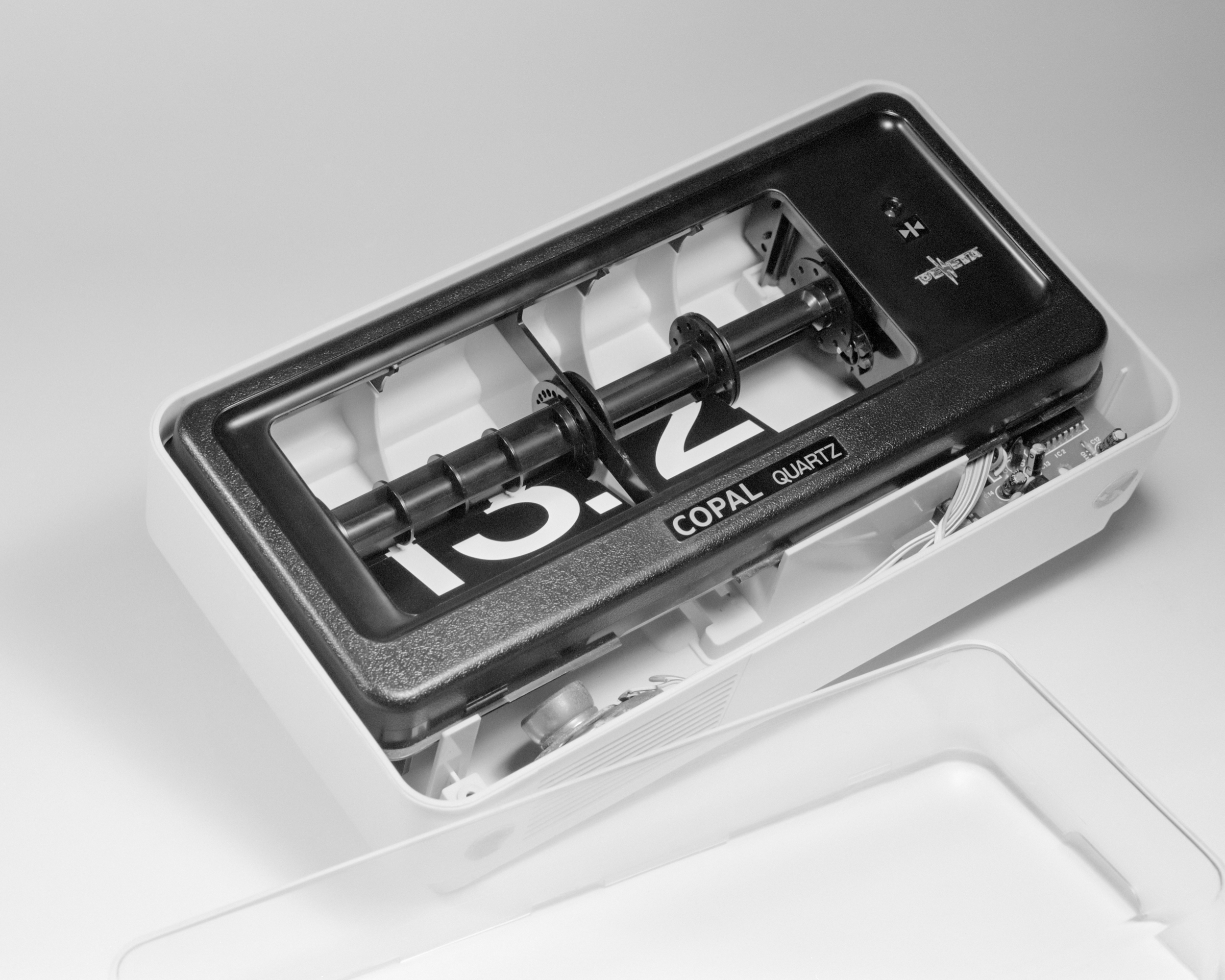


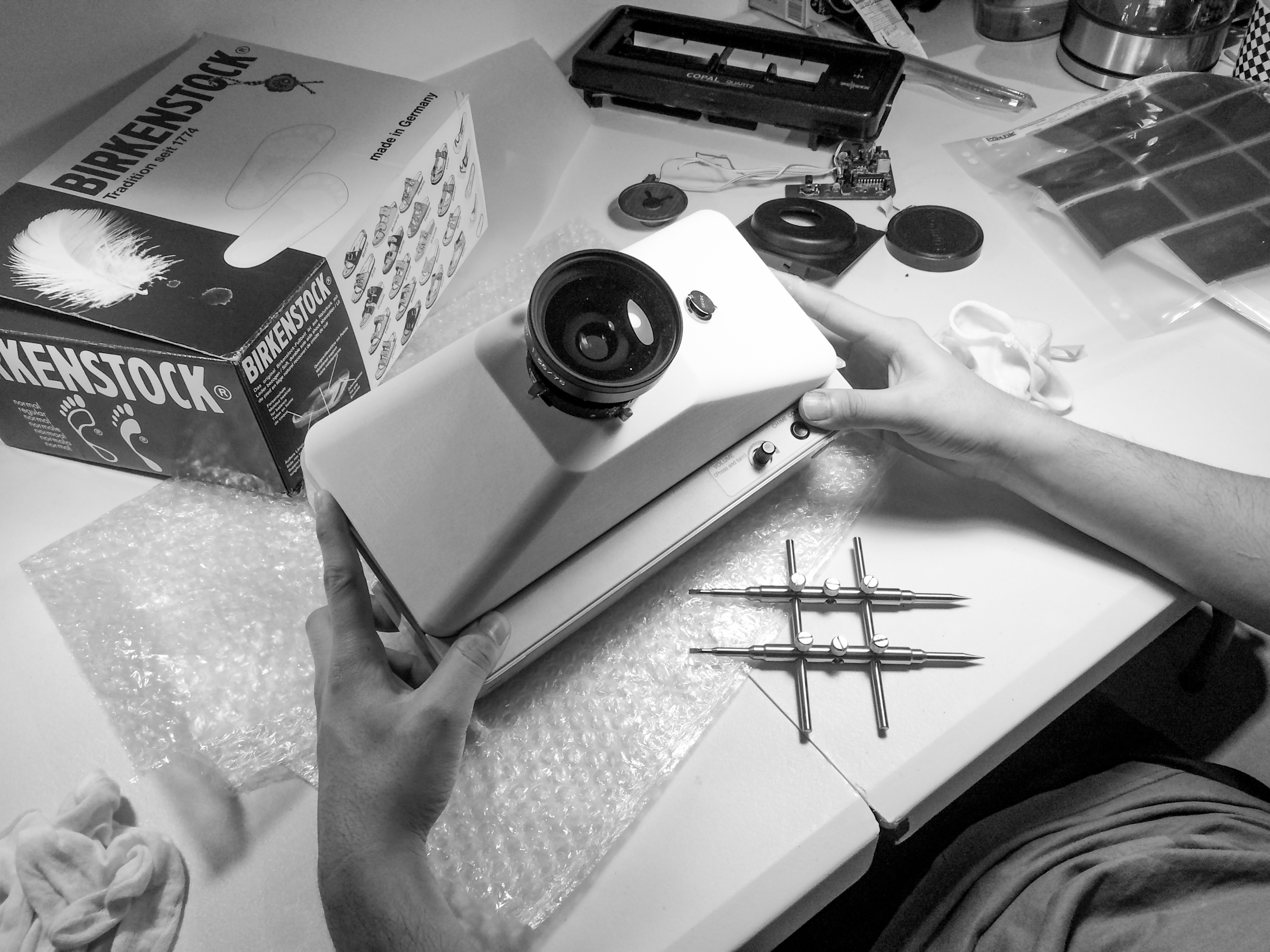

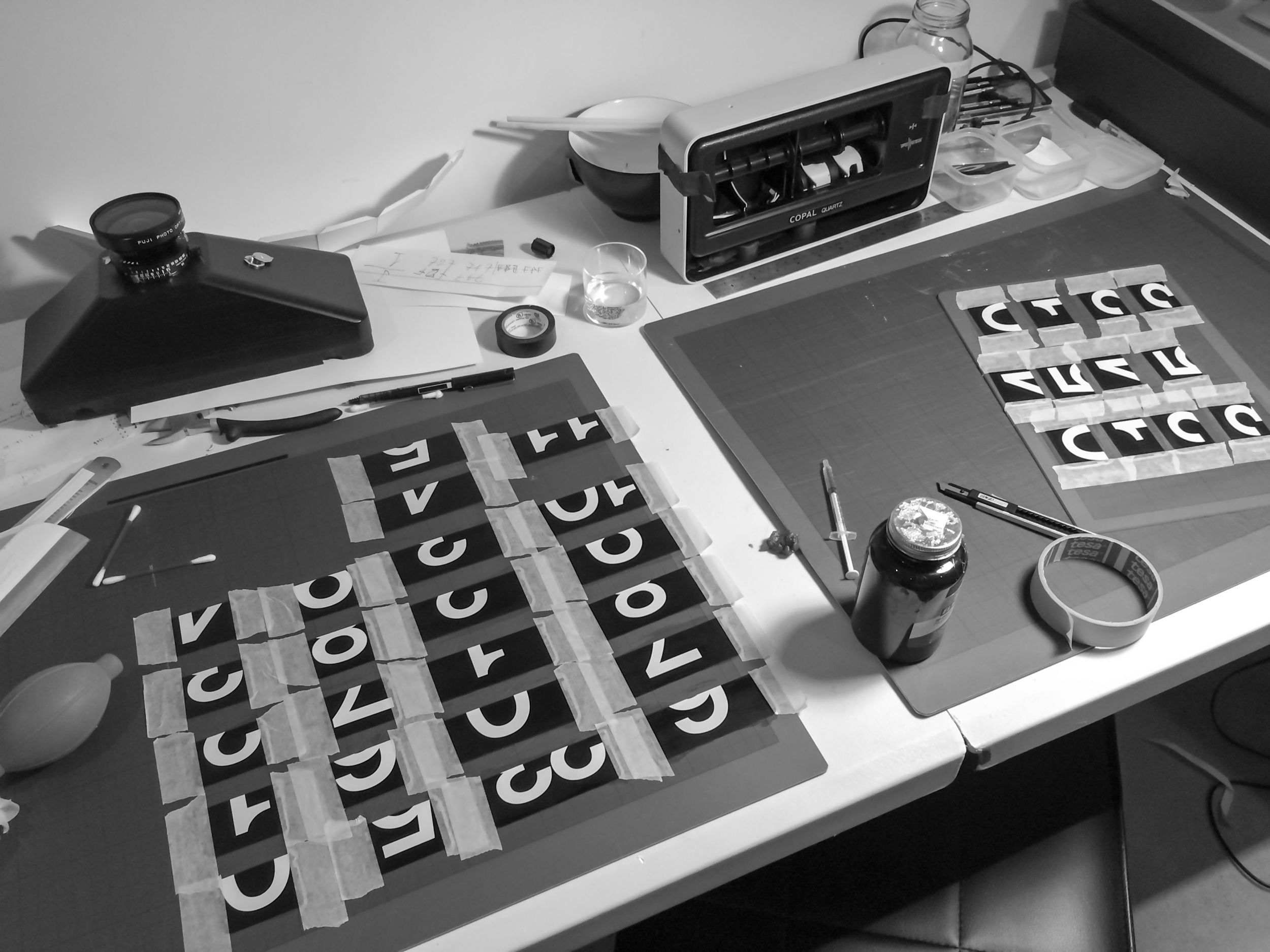

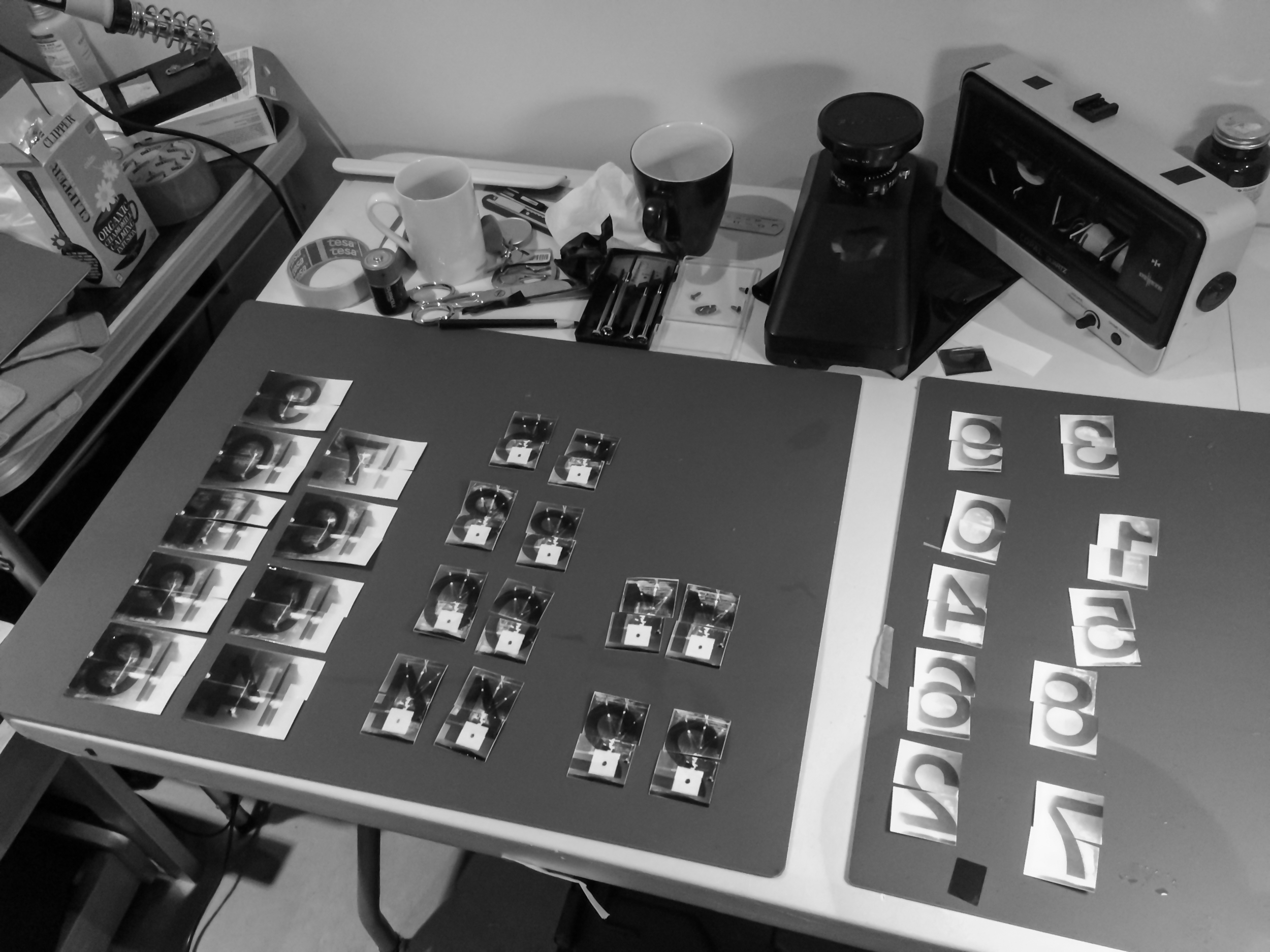
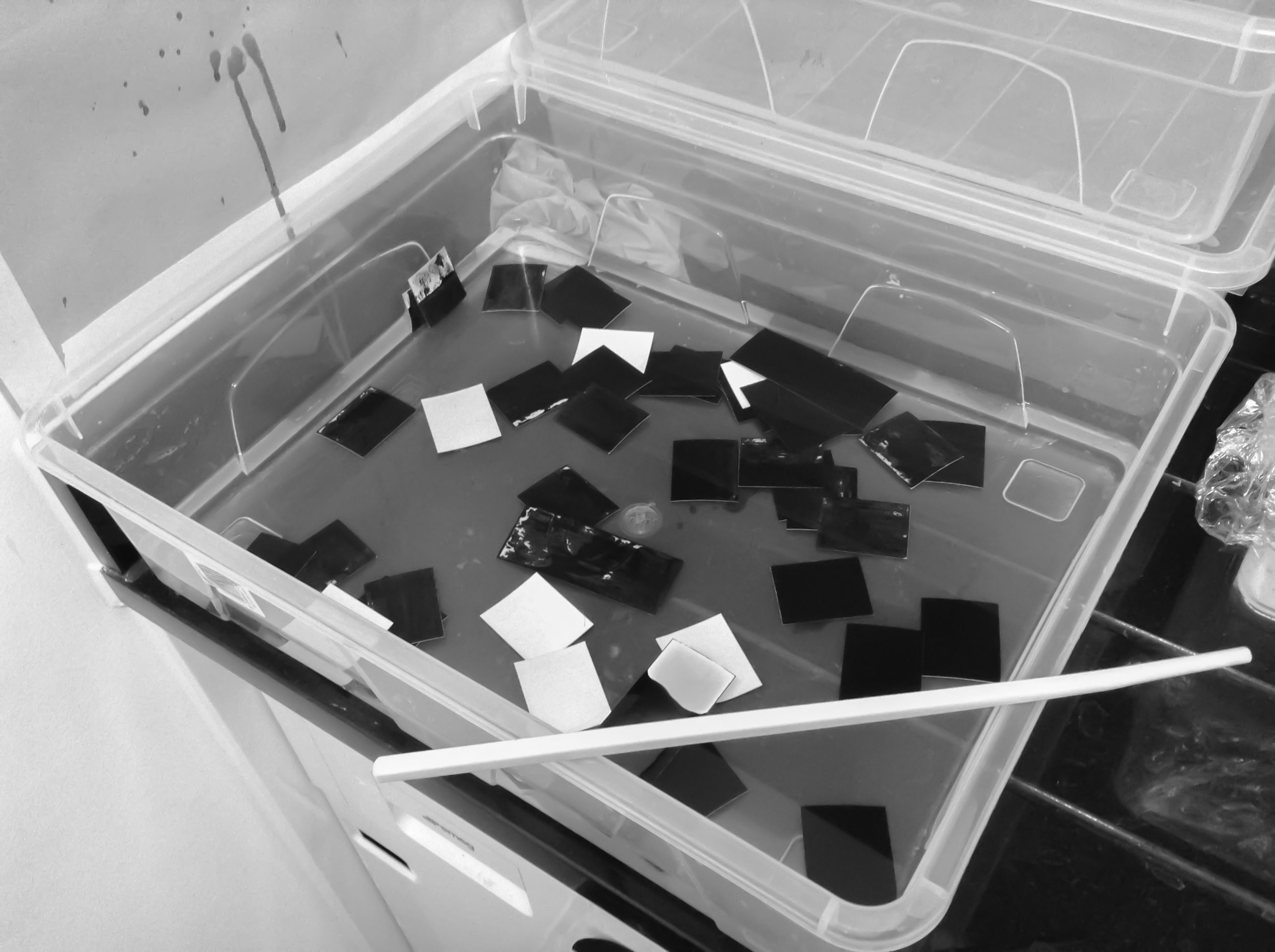


Details:
1. Adaptation of a Time Measuring Device into a
Photographic Apparatus
COPAL Flip Clock
Model. QG-872, 1970s
Number flaps fitted with
Ilford Multigrade IVRC Gloss Deluxe Photographic Paper
4. Prints from Kawara’s Clock
Exposure of the 9-hour performance in Studio
9am - 6pm
Shot on Ilford Multigrade IVRC Gloss Deluxe Photographic Paper
Photographic Apparatus
COPAL Flip Clock
Model. QG-872, 1970s
Number flaps fitted with
Ilford Multigrade IVRC Gloss Deluxe Photographic Paper
4. Prints from Kawara’s Clock
Exposure of the 9-hour performance in Studio
9am - 6pm
Shot on Ilford Multigrade IVRC Gloss Deluxe Photographic Paper
2. 13 Door Viewer Sample Units from A&H Brass
3. Kawara’s Clock
Fuji Fujinon SW D 75mm F5.6
Mounted on SLS 3D Printed Chamber,
Cured in resin light-proofed with Ronseal
Black Weatherproof Paint
Fitted on COPAL Flip Clock
Model. QG-872, 1970s
Equipped with Modified Nikonos VF-12 Underwater
Optical Viewfinder
Fuji Fujinon SW D 75mm F5.6
Mounted on SLS 3D Printed Chamber,
Cured in resin light-proofed with Ronseal
Black Weatherproof Paint
Fitted on COPAL Flip Clock
Model. QG-872, 1970s
Equipped with Modified Nikonos VF-12 Underwater
Optical Viewfinder